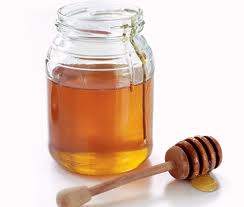Description
The Orange Blossom honey is one of the best known and most appreciated unifloral products worldwide. In Italy is second, by diffusion in the stores and consumer preferences, to the acacia blossom honey.
The Orange Blossom honey has the following characteristics: very pale, almost colorless to pale yellow liquid, and when “liquid” white to light beige in crystallized, strong smell, similar to that of the flowers from which it originates, usually sweet taste with slight acidity, aroma very intense, floral, similar to the smell, but of a more fresh, fruity trend. The tendency to crystallize is of medium-high level: it is common in products slightly humid, a granulation rather coarse, due to the conservation in a hot environment during the period of crystallization. The same products, dehumidified or kept under different conditions (cold temperature),would develop crystals more thiny.
It comes from the Italian citrus land, it has a sweet fruity flavor very intense, at the smell has an intense aroma reminiscent of the unmistakable scent of fragrant orange blossoms. Is generally finely crystallized why it pays to as a sweetener for breakfasts and desserts.
Elementary information
Name of the product: Orange blossom honey
Category: Honey
Net weight: 100 g or 400 g.
Ingredients: 100% Italian honey
… a little bit of history ..
To produce honey “Monoflorale” (one flower hoey) we adopt the practice of ‘”Nomad Beekeeping“.
First, it is good to know that the of bees does not fly more than 2 or 3 km radius around the hive.
The nomad beekeeping is a way to move the hives from place to place depending on the presence of plants in bloom. Moreover, these displacements enable the production of flower honeys allowing a better supply of the final product.
One time the hive were loaded onto special boats that went up the rivers towards the most favorable regions from honeydew. When you reached a certain waterline, the hives were full.
Today the movement of hives occur on the road: you load them in the night (when all the bees have returned) and unloaded at sunrise.
The movements are often functional changes in altitude, and the season progresses, beginning from the plains and valleys between April and early June, following the more blooms late July and August, ending with the harvest of honeydew, before return to winter in the plains.
This method, which turns out to have very high costs of management, is in ‘”chase” the various spring flowering and summer moving the combs with the families of bees. This allows us to choose the most healthy and unpolluted places with the greatest concentration of flowers.
… curiosity …
 Man uses honey from about 12,000 years.
Man uses honey from about 12,000 years.
A family of bees consists of one queen bee, many (from 6,000 to 70,000) workers (sterile females), from drones (males) and brood (larvae). A hive consists of a single colony or family.
The bees are on earth from 4 million years for the same current appearance.
Worker bees have an average life of 6 weeks in summer and are primarily responsible for supplying the hive with their favorite food, while those born in late summer or early autumn will live from 5 to 6 months will have a body more rich in fat acids. Their work is to protect the queen, to keep the swarm in glomere that will pass the winter at a temperature of about 30 ° C, and then, in February, prepare for the arrival of new generations.
In ancient Babylon, the just married couples received as a symbol of fertility, honey in a quantity sufficient for one month. (hence, perhaps, the honeymoon period).
To produce 1 kg of honey are needed more than 50,000 flights round trip from ‘hive to flowers, for a total of 150,000 km, flown to haul flowers that grow to a radius of 3 km from the hive.



